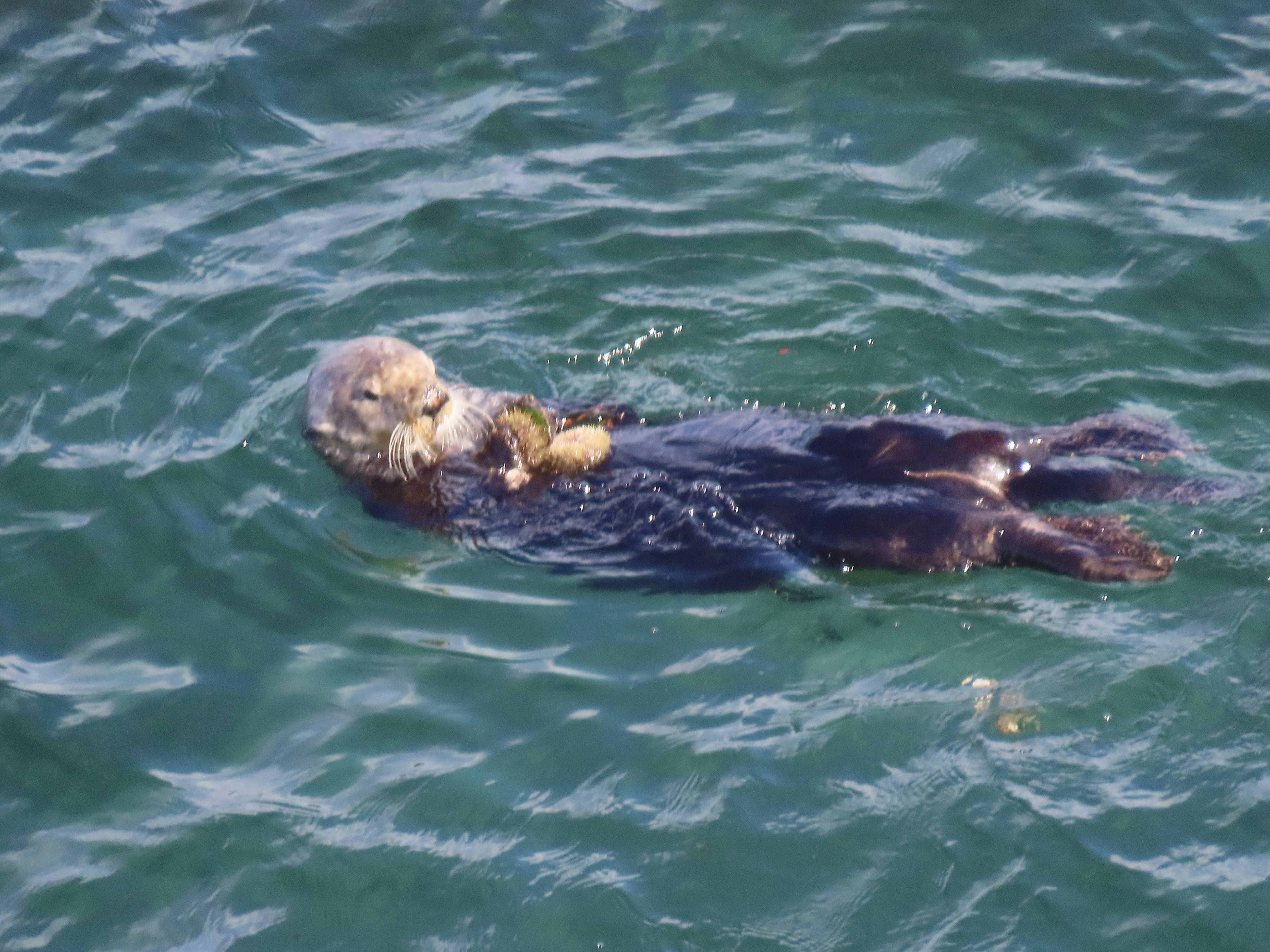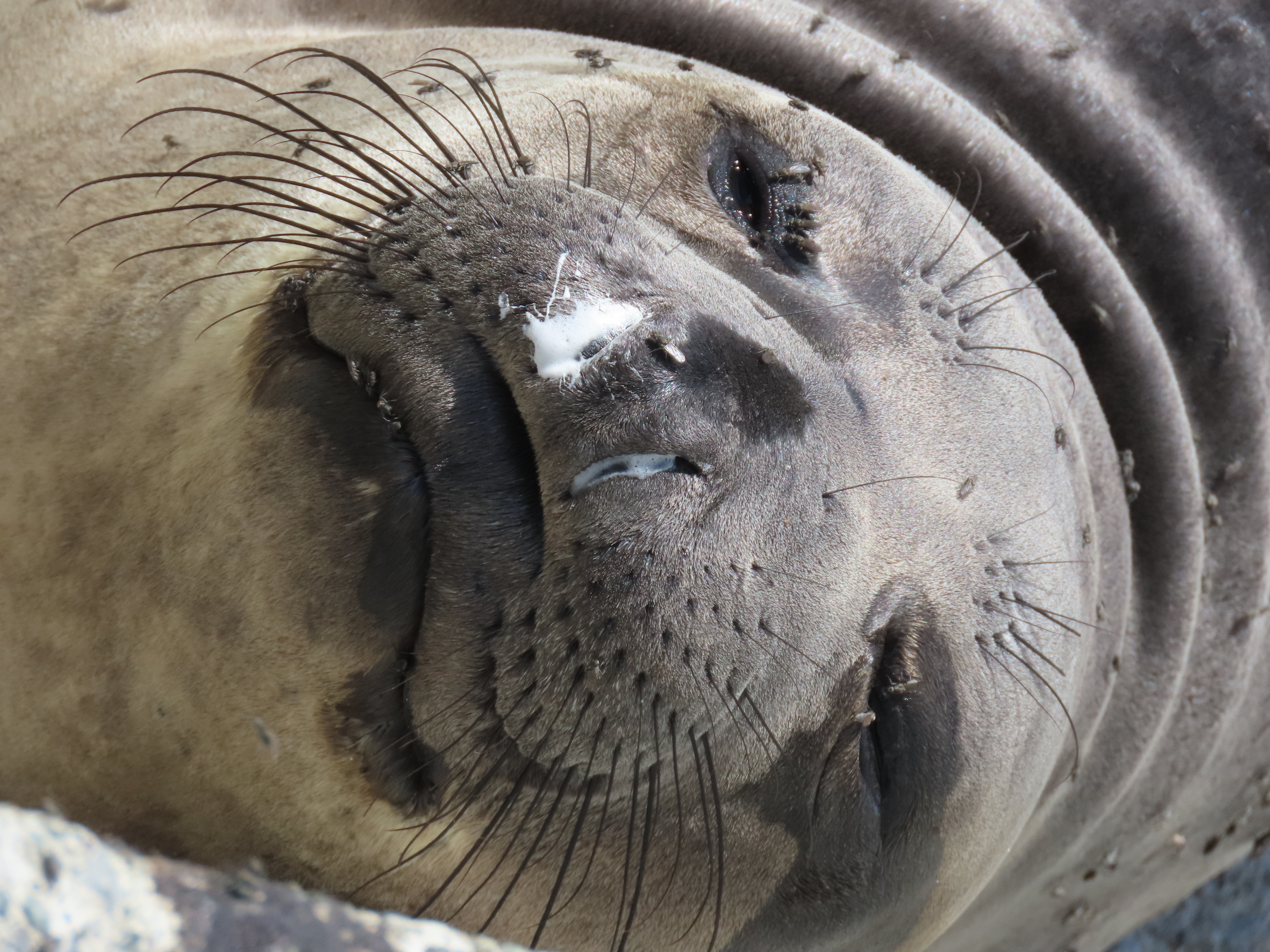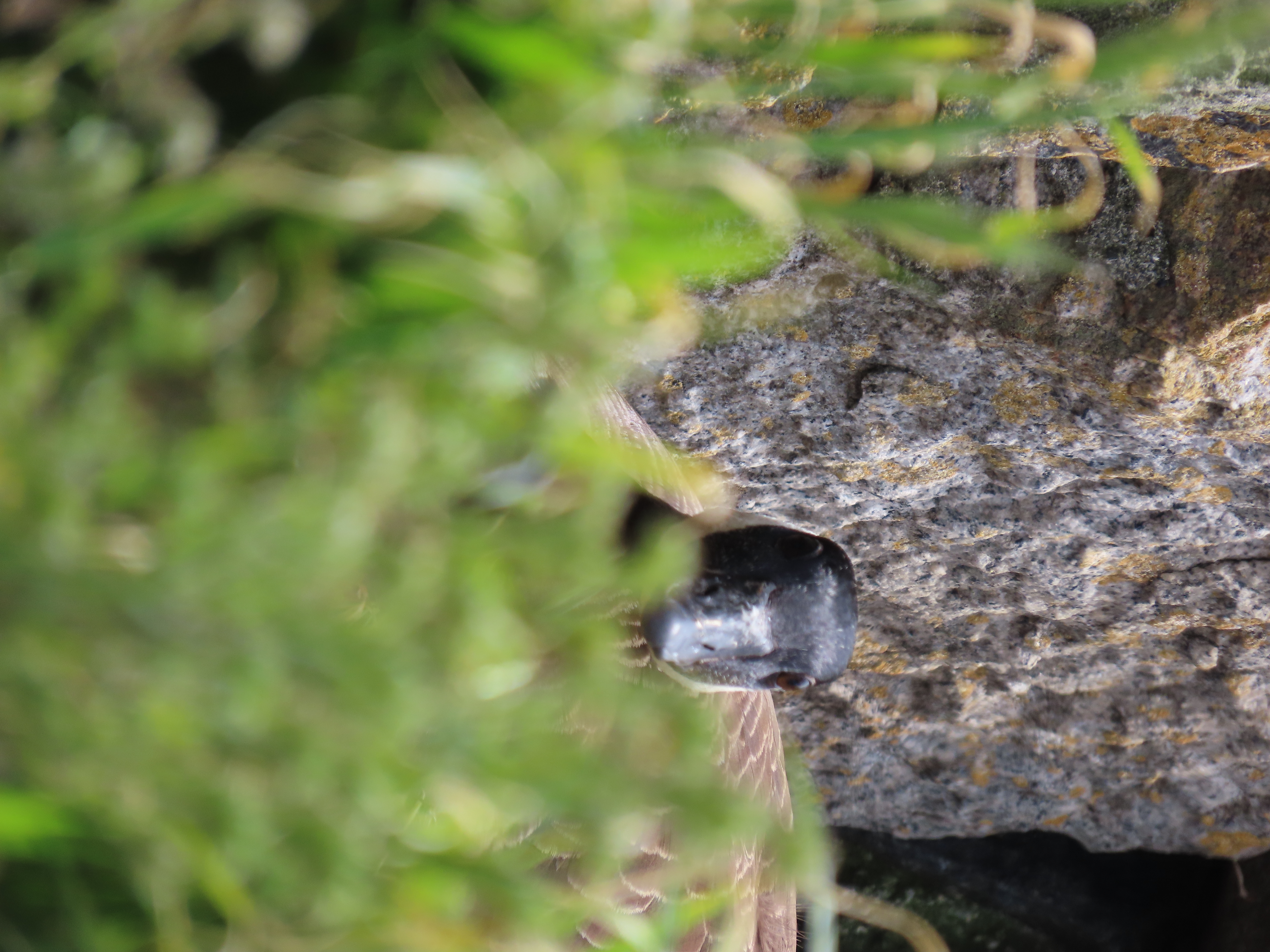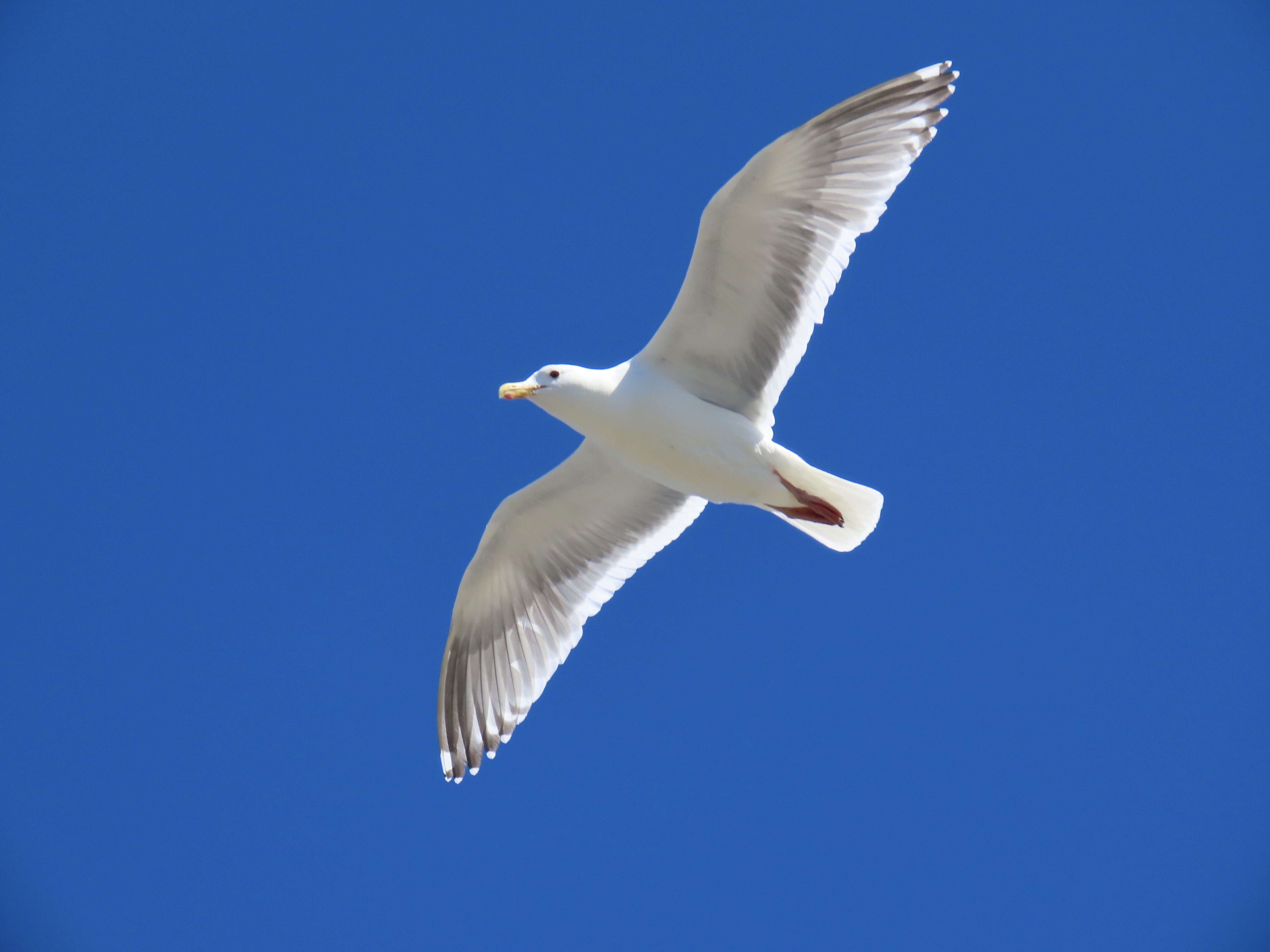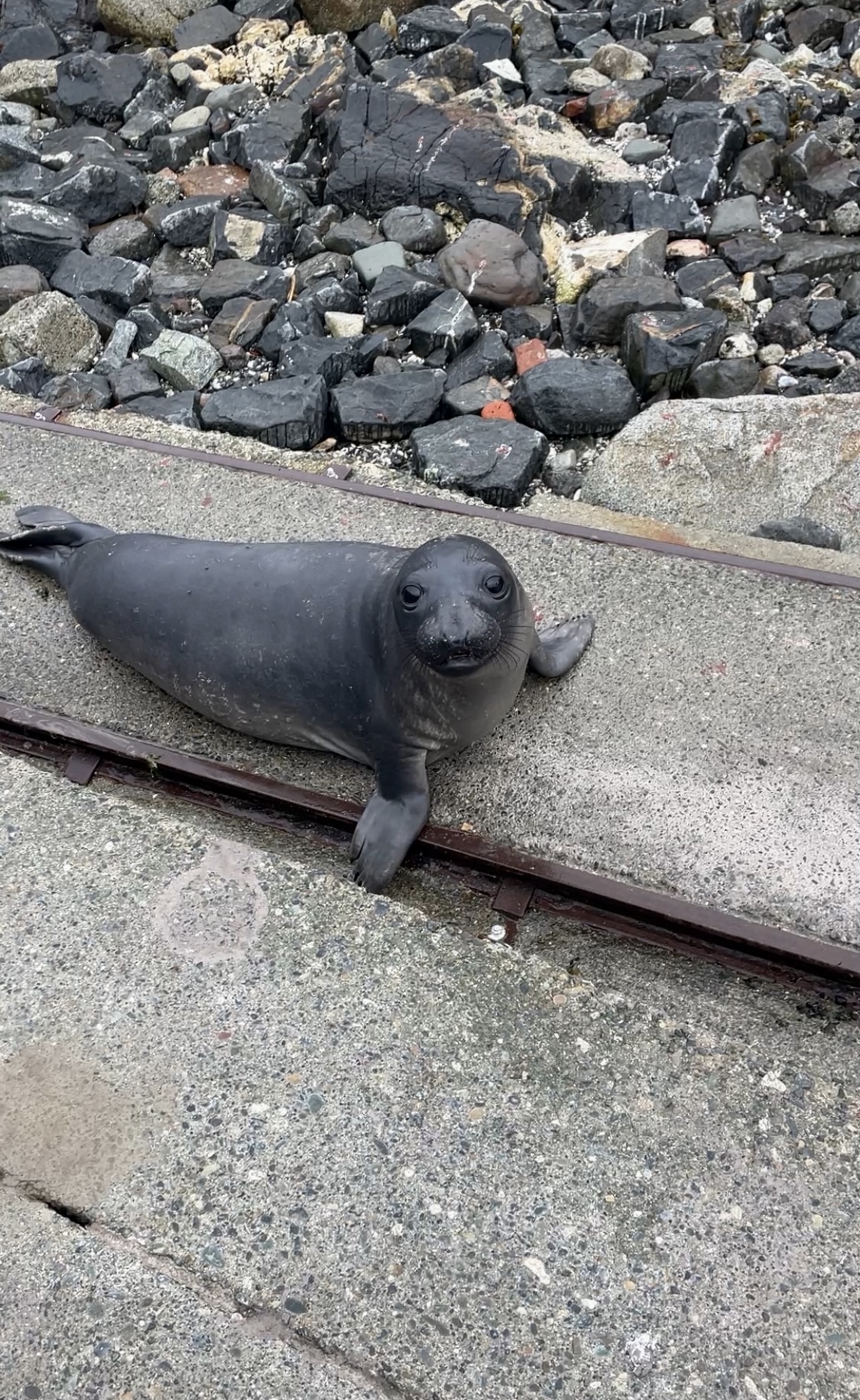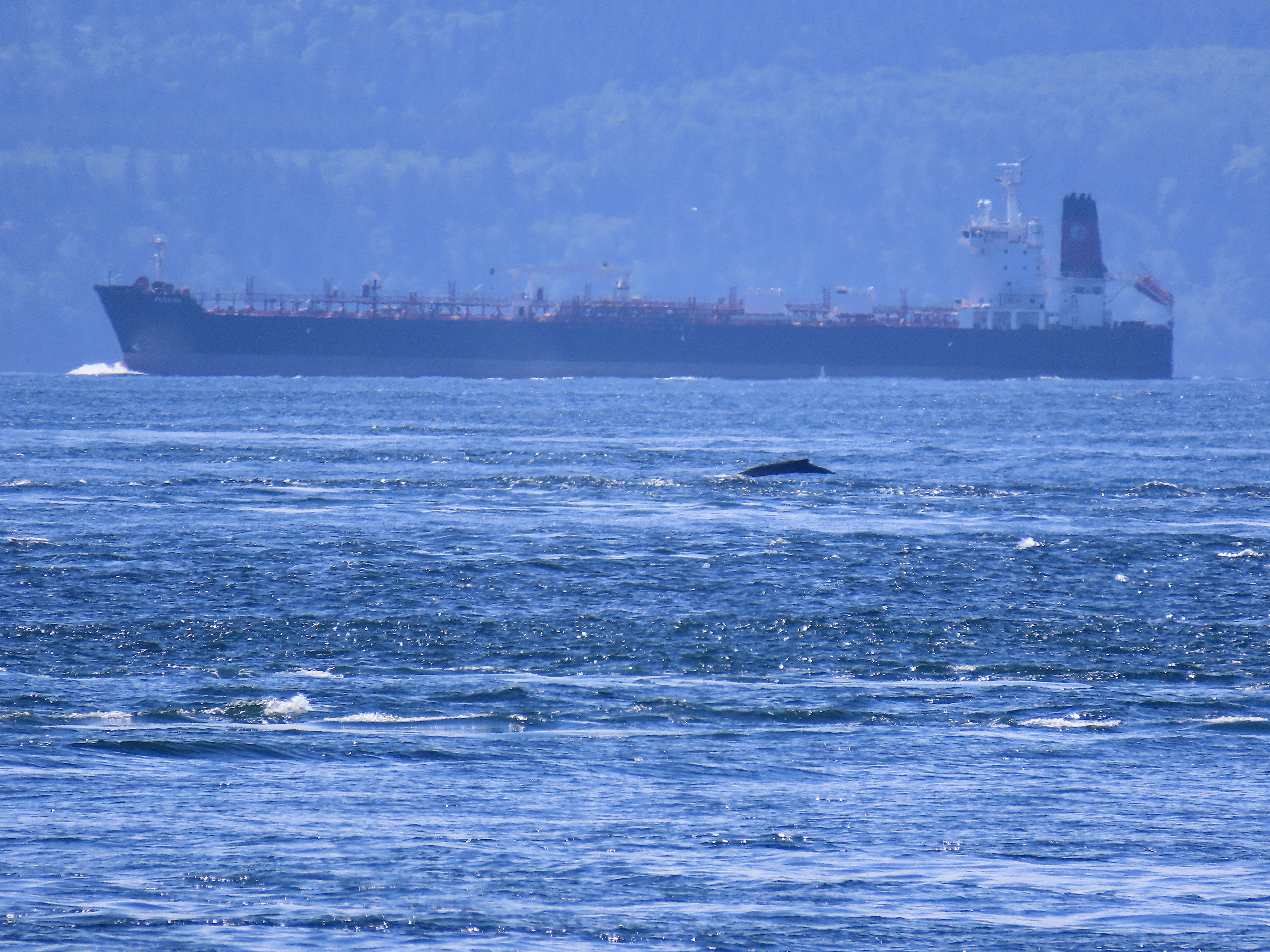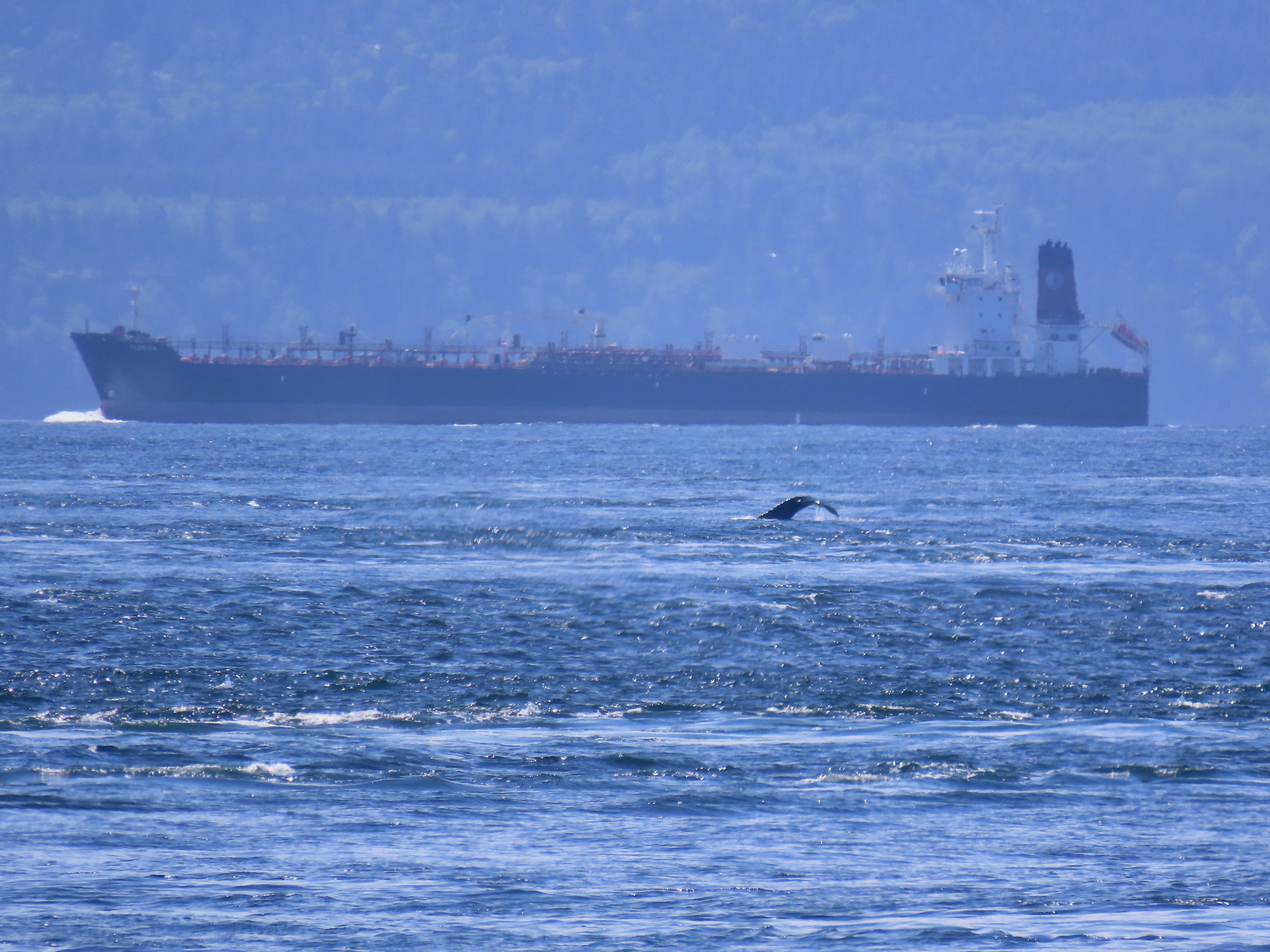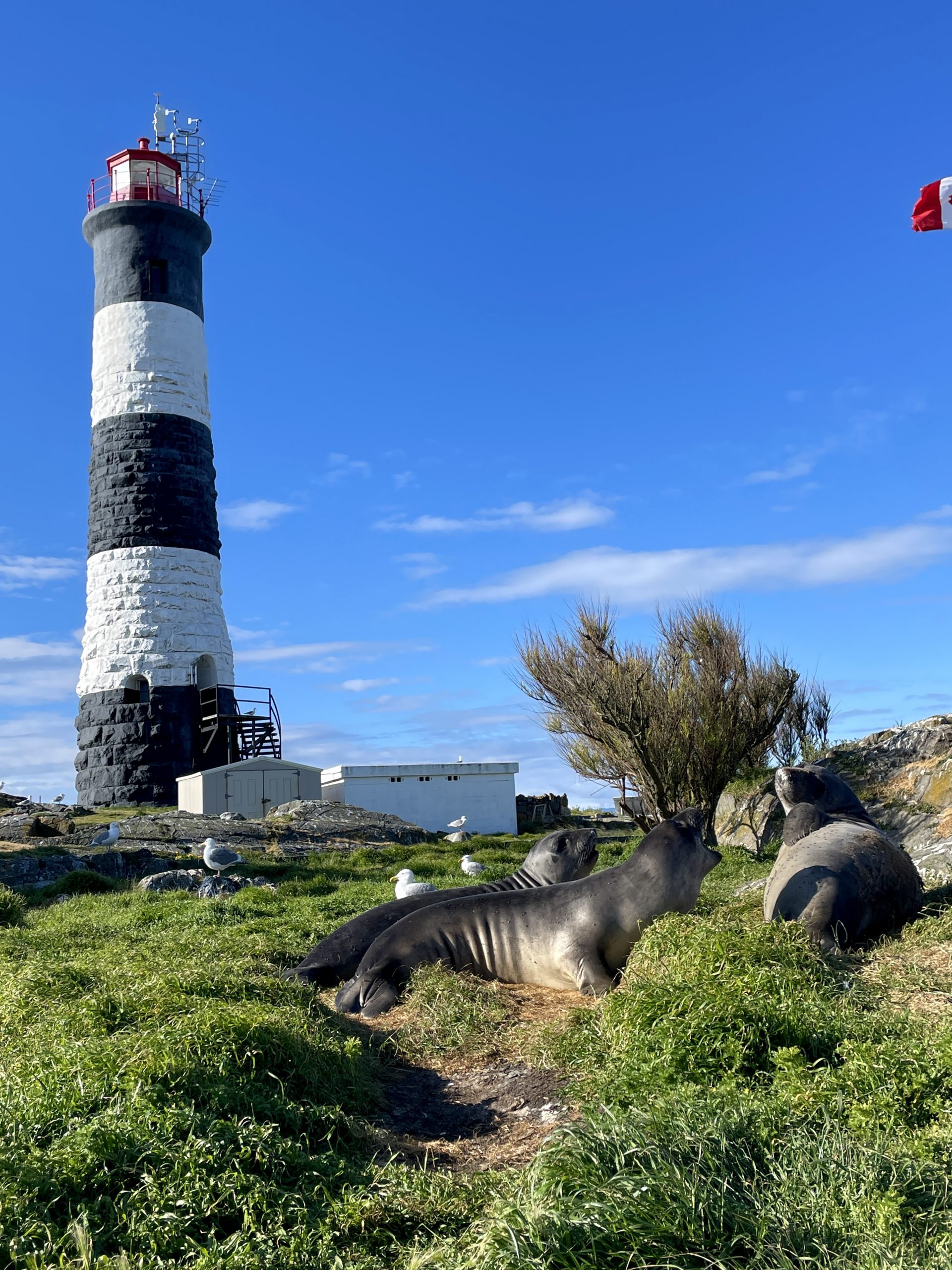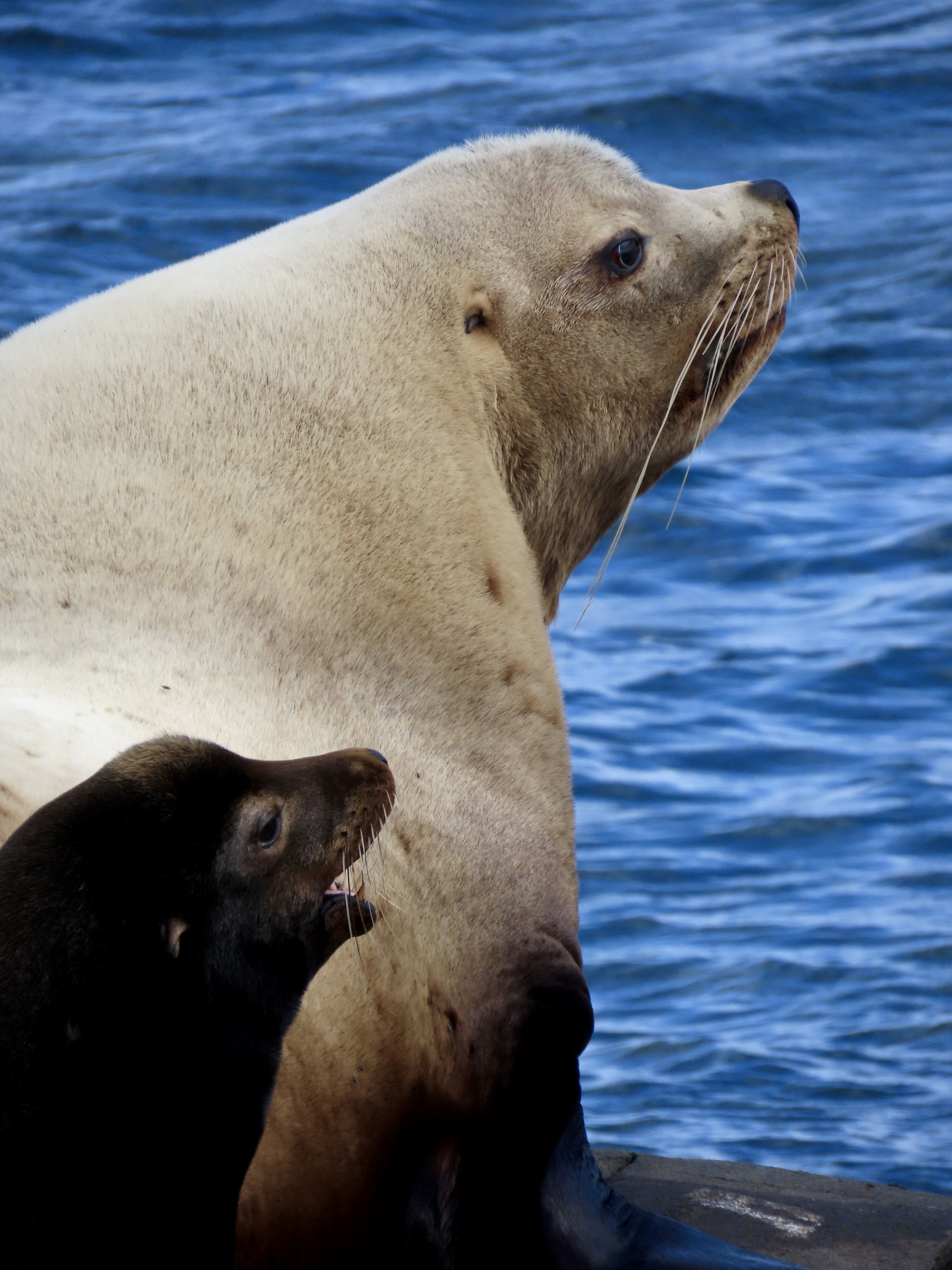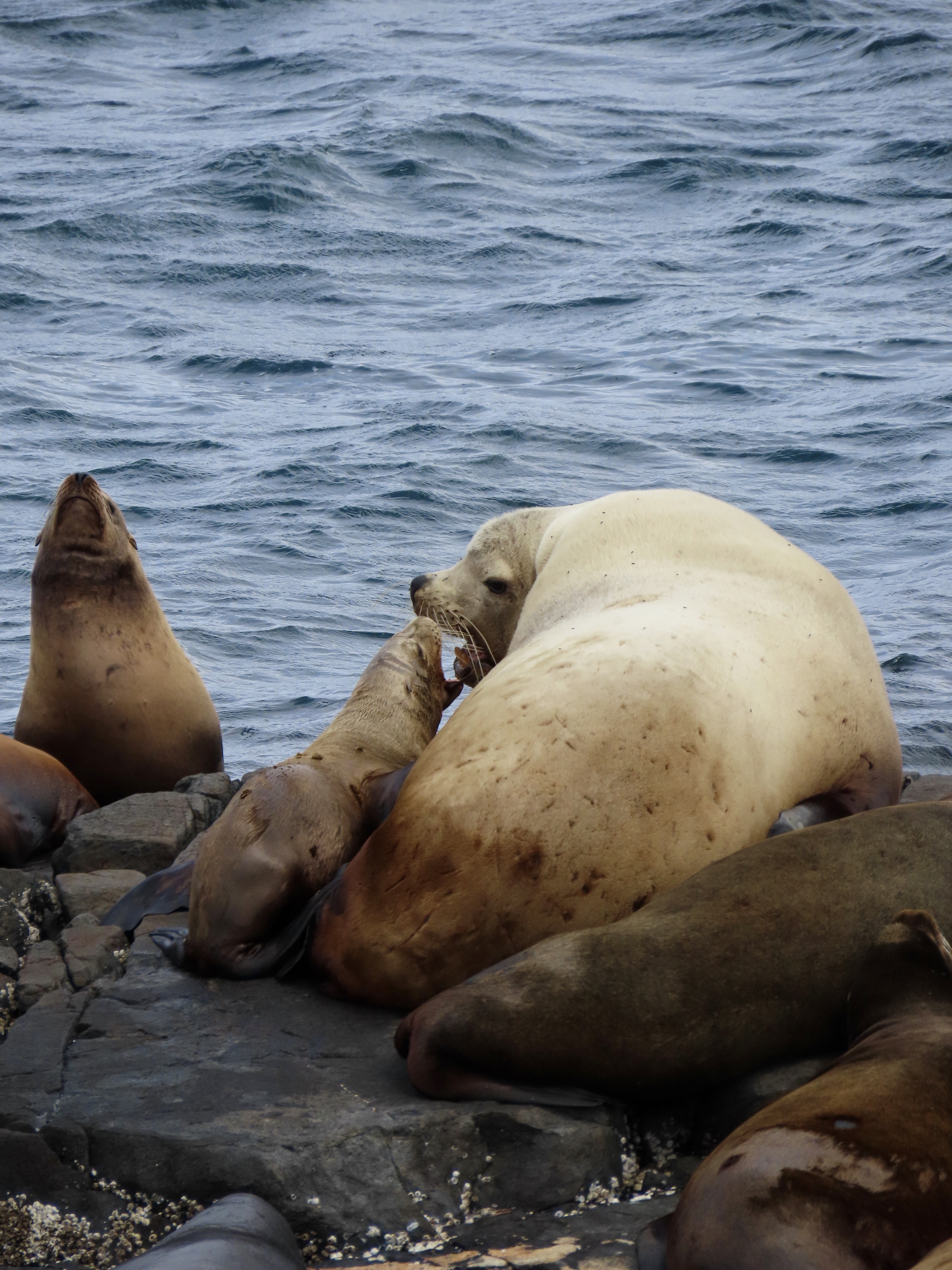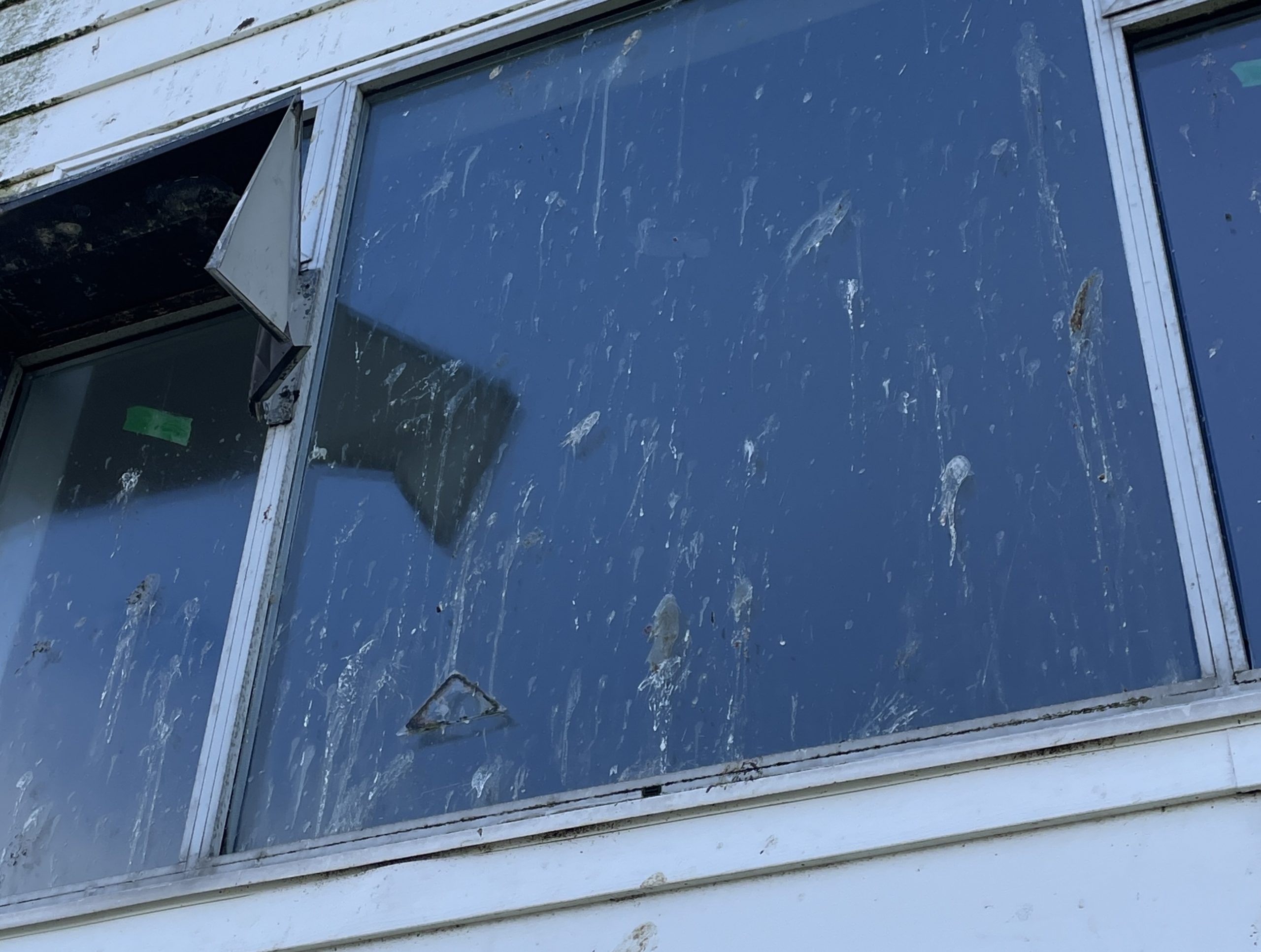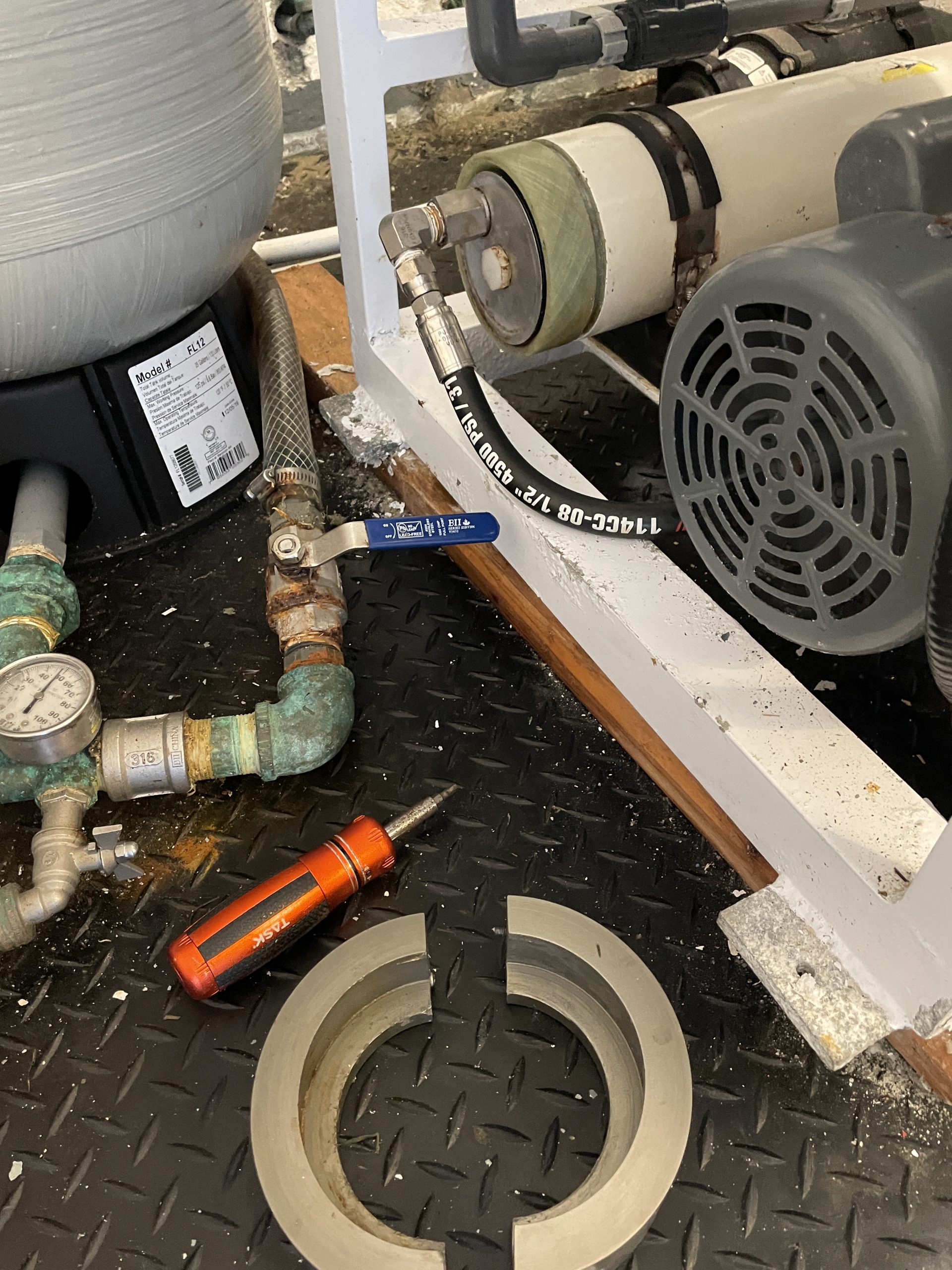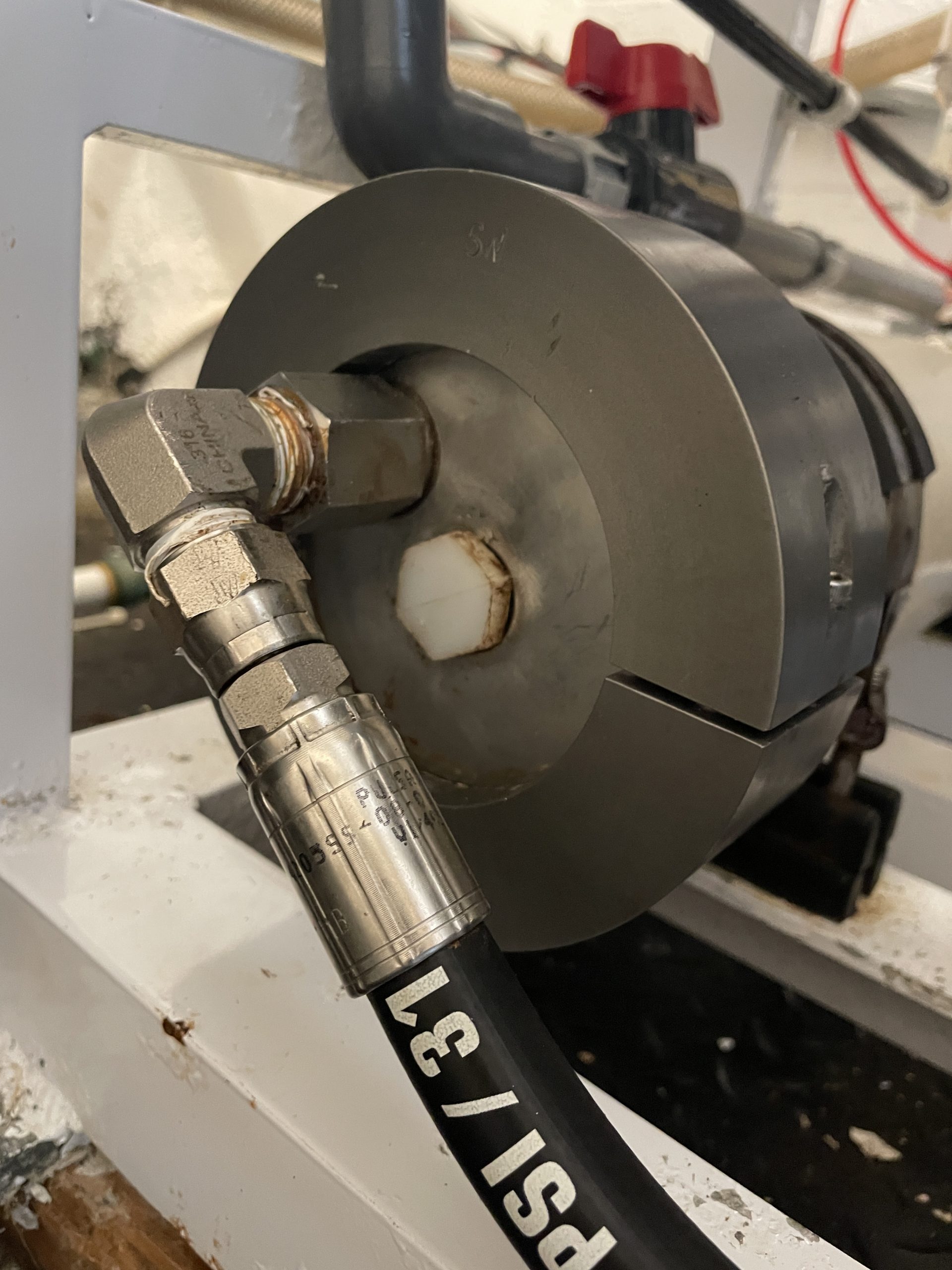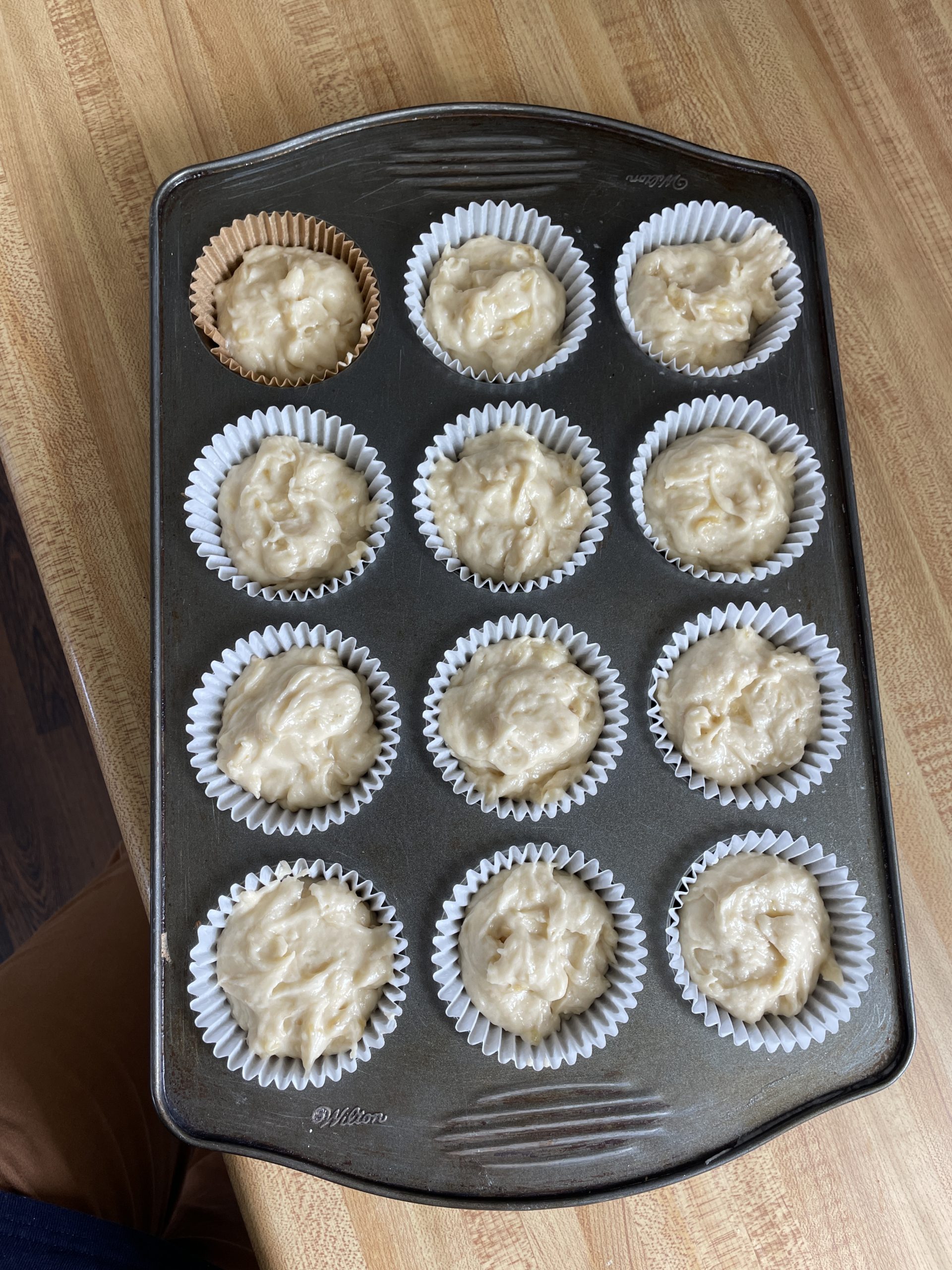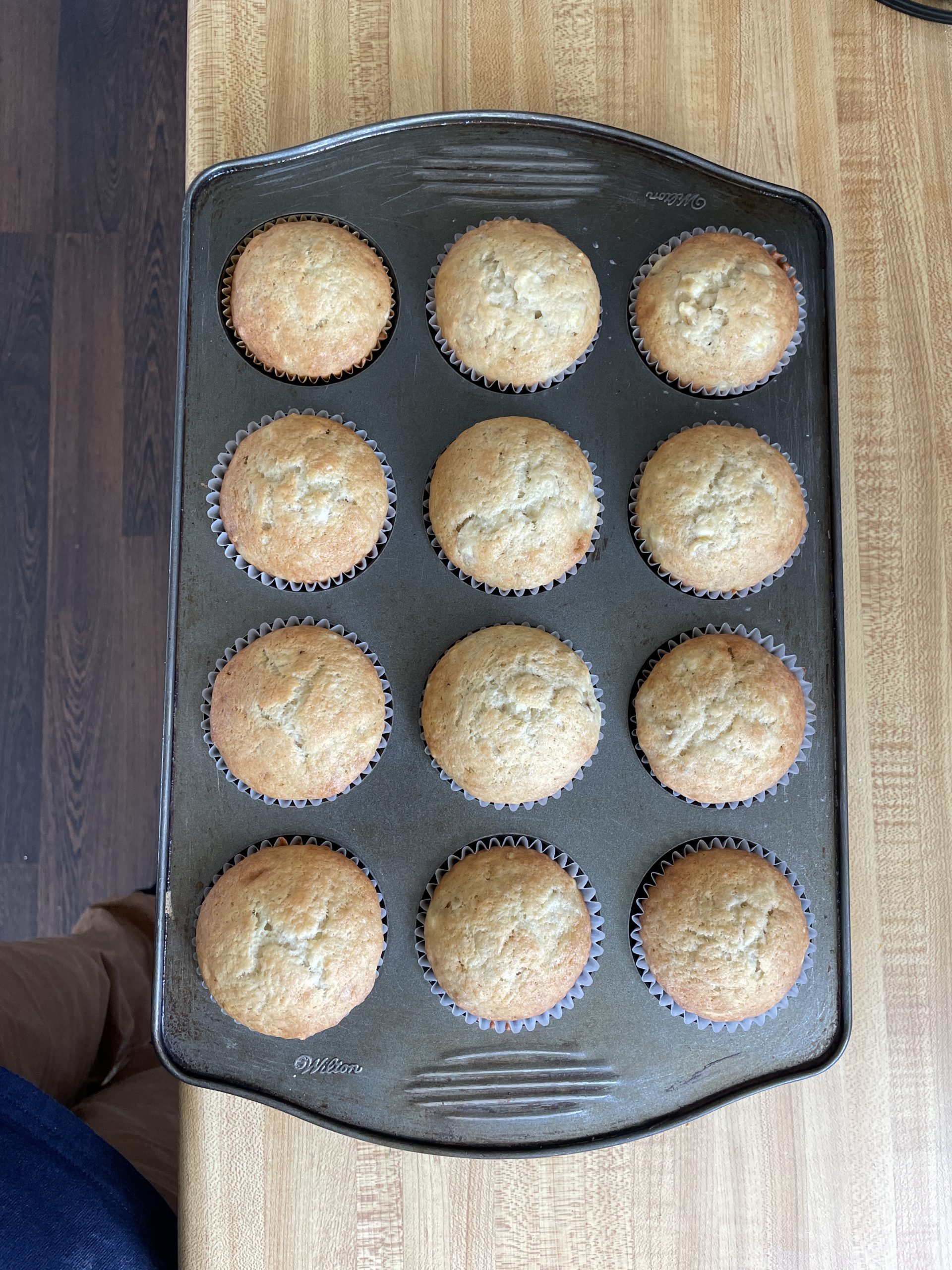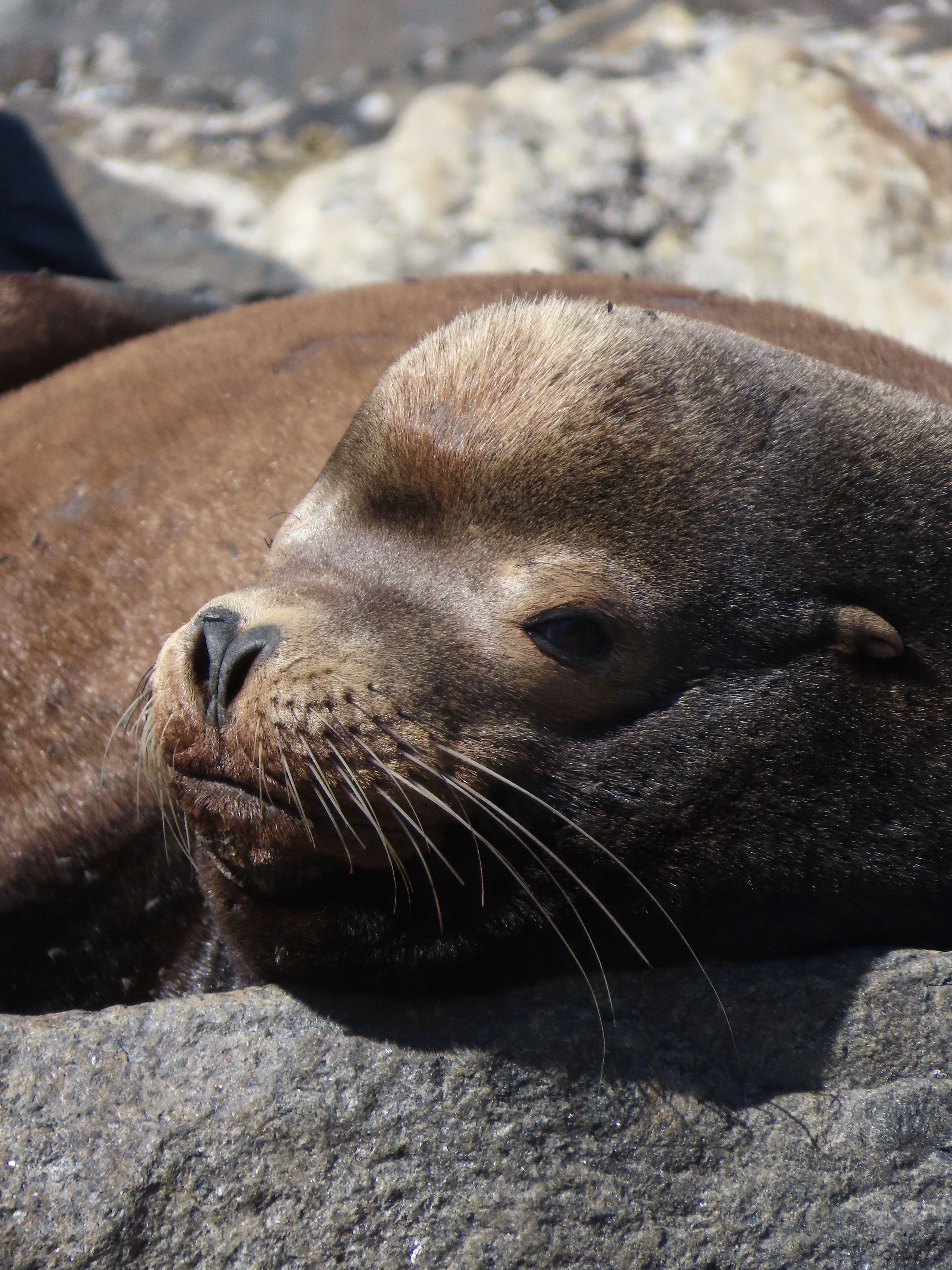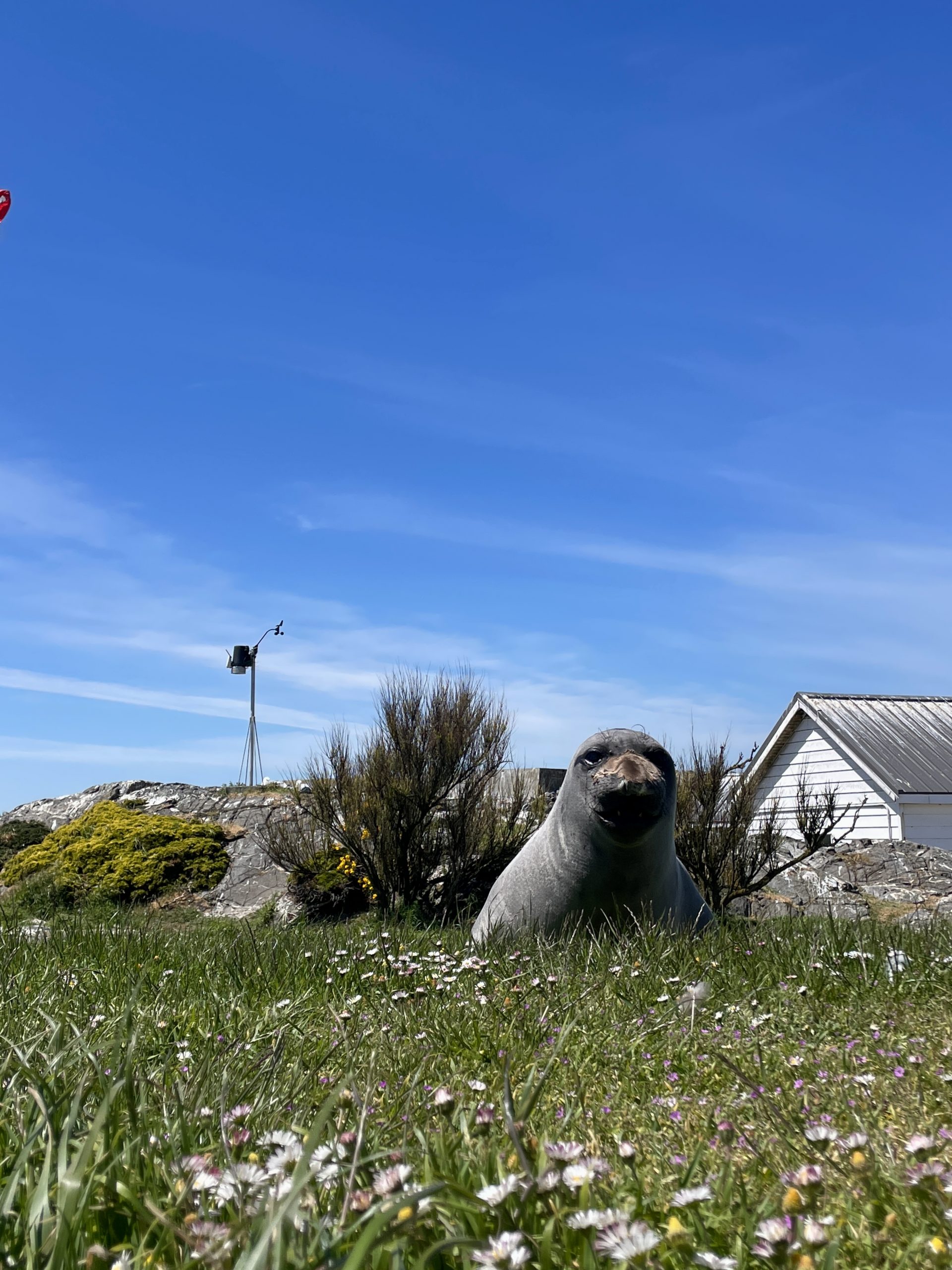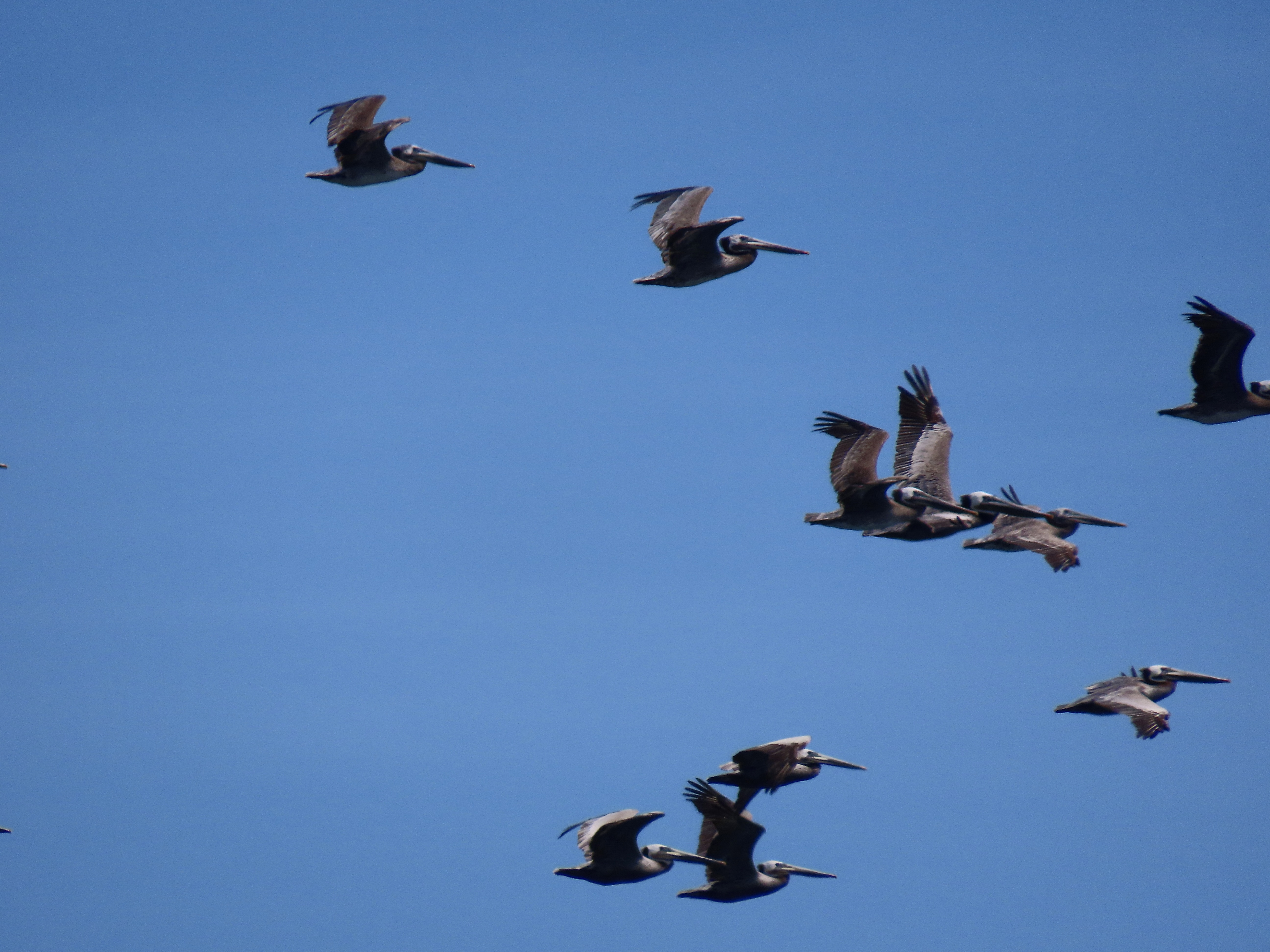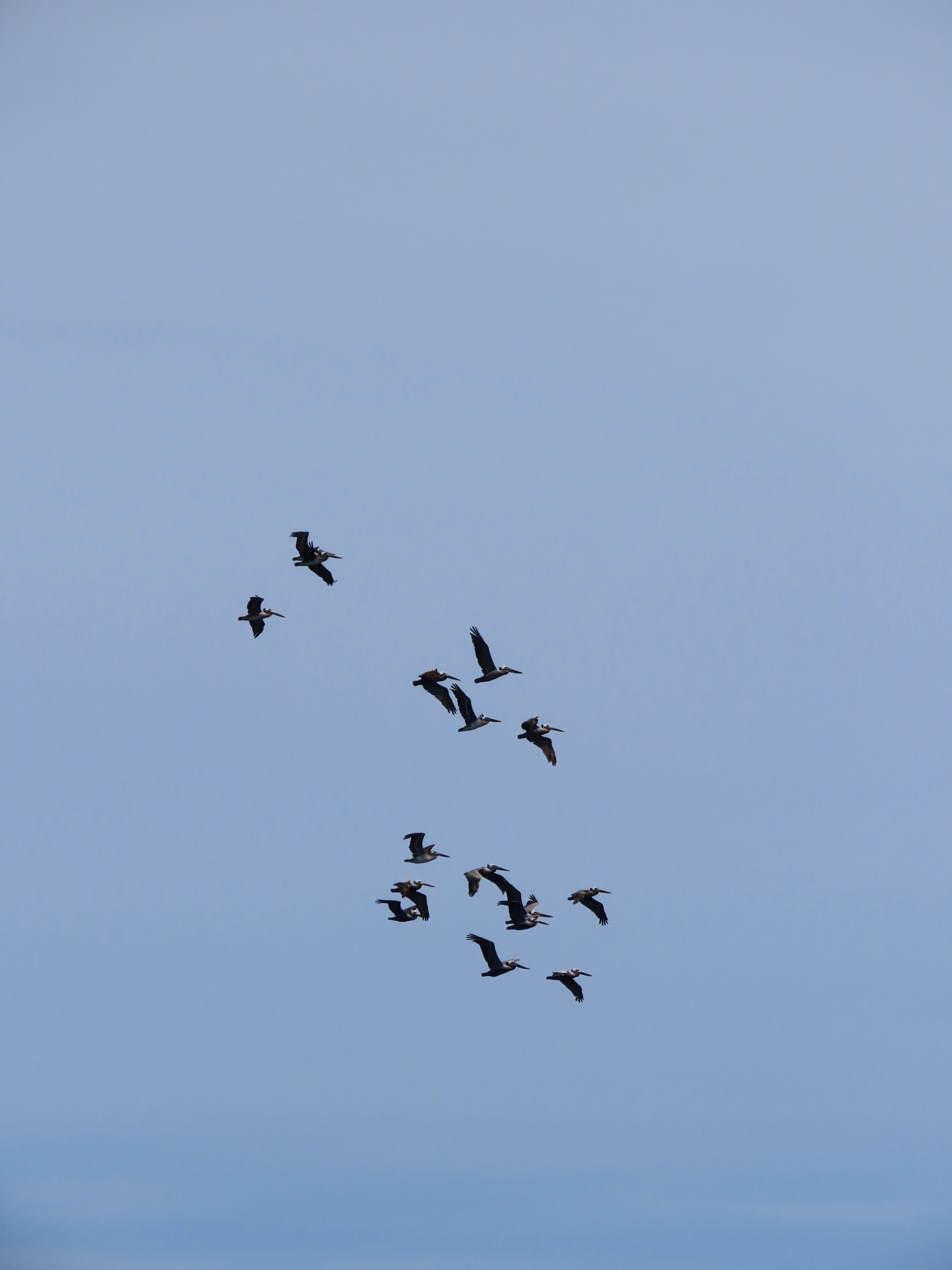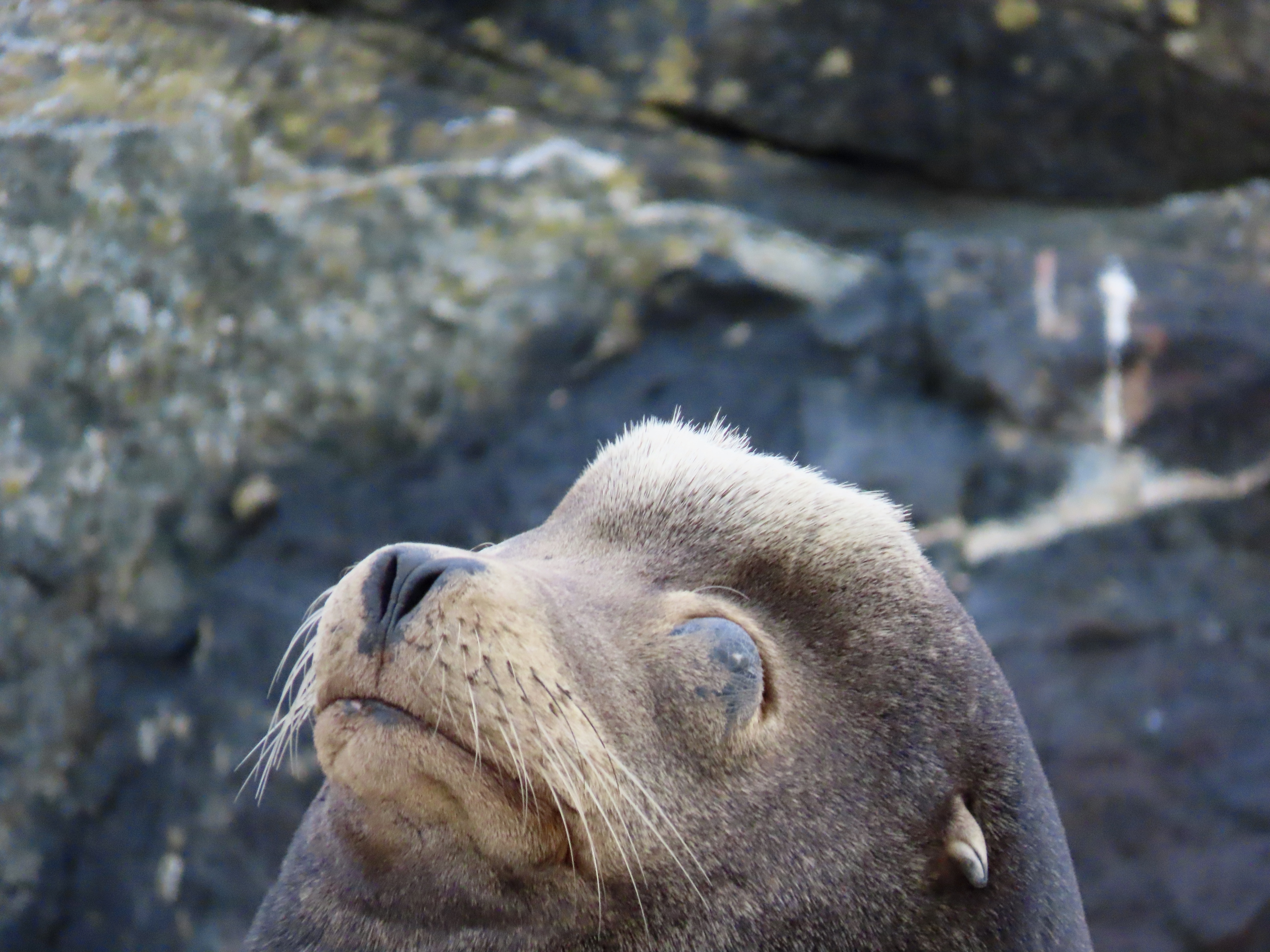We have been down to just 3 elephant seals the last few days! The two small females and one larger one are still enjoying the grass, however the largest female has not been around in a few days. The last I saw of her was 2 days ago when she was bobbing around in the water behind the student house, so I wonder if she’s just chosen to haul out on one of the surrounding rocks.
Ollie spent his day in the water near Middle Rocks, just floating and looking extra fluffy.
The Stellers were no where to be found today but the California sea lions have spent the week tucked in to the left of the jetty. They must be smarter than they let on because that area is definitely the most protected from the wind. They still require the occasional reminder to stay off the jetty throughout the day but otherwise behave themselves.
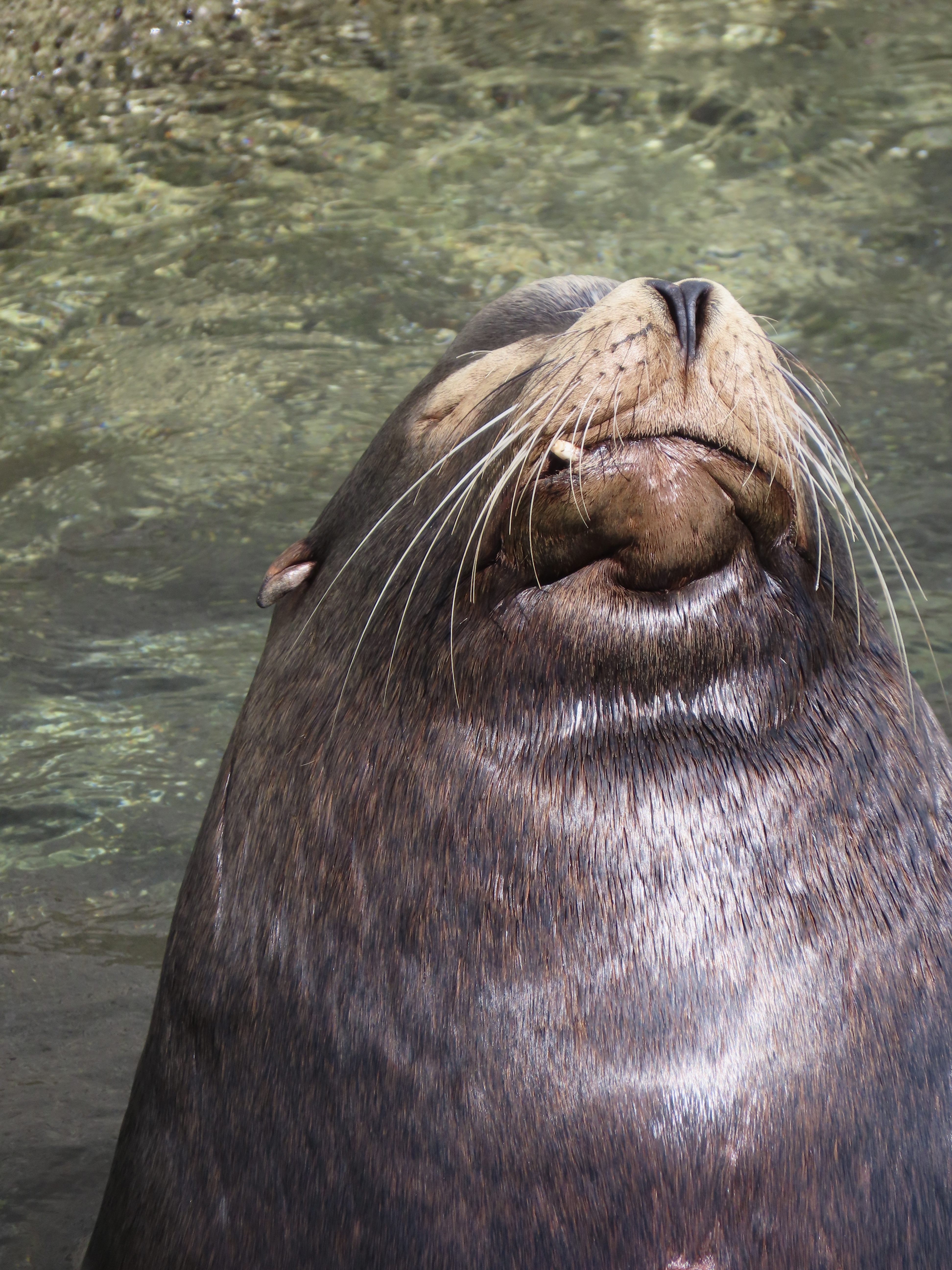
California sea lion proudly displaying his snaggle tooth
Lastly on the mammal side of things, the harbour seal numbers seem to have grown since I was here in March and with pupping season just a few weeks away I hope to see that number grow before I leave in June!
There are tons of pigeon guillemots around lately, I love to watch them on the rocks and I think my favourite thing about them is that their feet perfectly match the inside of their mouth.
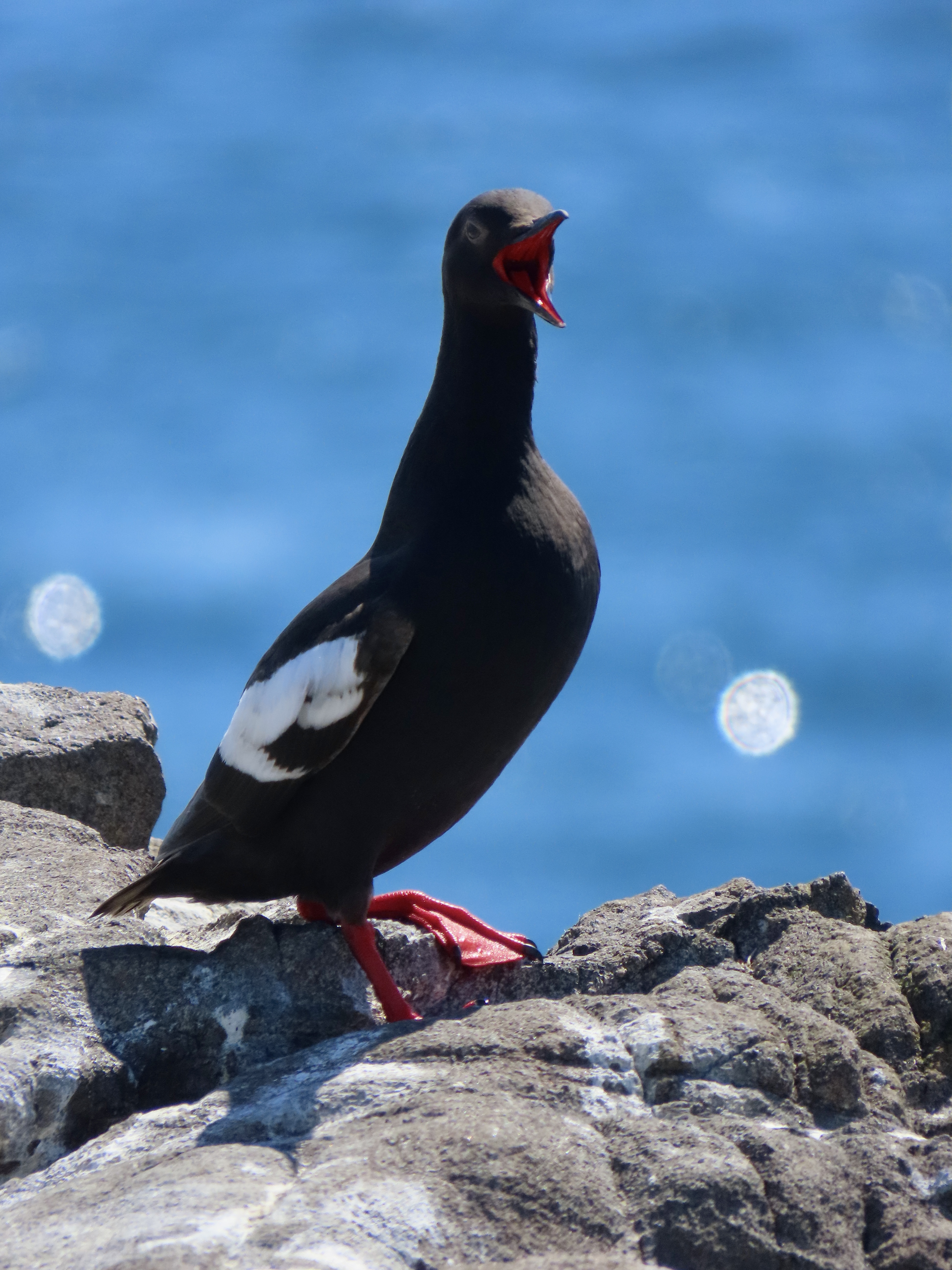
Hopefully this wind dies down in the next few days and I can get back to taking more photos!
Facility work:
- Cleaned solar panels
- Topped up battery electrolytes
Weather:
- Sky: Cloudy, sun and clouds in afternoon
- Wind: Low of 14 knots, High of 19 knots, gusts up to 30 knots
- Sea: Small whitecaps
- Temperature: Low 7•C, High 15•C
** All wildlife photos taken at the furthest distance possible, and may be cropped to improve detail! **
